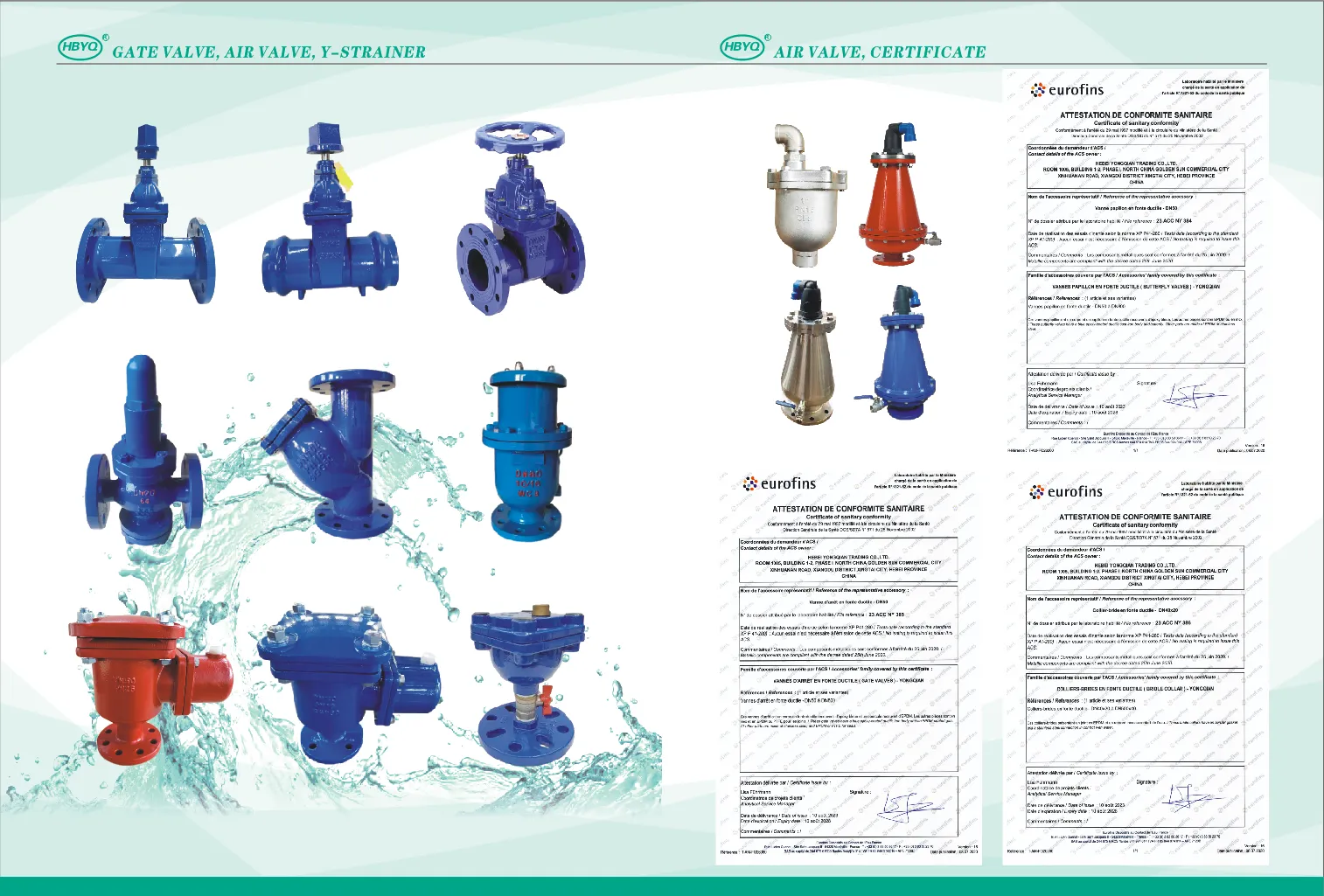fire fighting butterfly valve
Understanding the Fire Fighting Butterfly Valve A Crucial Component in Fire Safety Systems
In the realm of fire protection and safety, various components work together to ensure that a building is adequately equipped to handle potential fire hazards. One such essential component is the fire fighting butterfly valve. This specialized valve plays a critical role in fire suppression systems, allowing for the effective control of water flow in fire hydrants, sprinkler systems, and other firefighting mechanisms.
What is a Butterfly Valve?
A butterfly valve is a type of quarter-turn valve that regulates flow by using a rotating disc, or 'butterfly', that is mounted on a shaft. When the valve is opened, the disc rotates 90 degrees to allow for maximum flow through the pipe. Conversely, when closed, the disc blocks the flow completely. This design is not only efficient but also compact, making butterfly valves suitable for various applications, particularly in fire fighting systems where space savings can significantly impact system design and implementation.
Significance in Fire Fighting Systems
The primary function of fire fighting butterfly valves is to control the flow of water in fire suppression systems. In the event of a fire, timely and effective response is paramount, and these valves enable quick access to water. They can be engineered into various fire protection systems, including
1. Sprinkler Systems In fire sprinkler systems, butterfly valves help manage water pressure and flow, ensuring that water is available at the required levels when needed. 2. Hydrant Systems Fire fighting butterfly valves are integral to fire hydrant systems, allowing firefighters to quickly connect hoses and draw water from municipal supplies.
3. Standpipe Systems These systems, often found in high-rise buildings, rely on butterfly valves to regulate water flow from the main supply to the standpipe, facilitating efficient interior fire suppression efforts.
Features of Fire Fighting Butterfly Valves
fire fighting butterfly valve

Fire fighting butterfly valves come with specific features that enhance their functionality and reliability, especially under the demanding conditions associated with firefighting. Some of these features include
- Durability Constructed from robust materials like ductile iron, stainless steel, or other corrosion-resistant alloys, these valves are designed to withstand harsh environments and high pressures typically found in firefighting situations.
- Quick Operation The quarter-turn operation allows firefighters to open and close the valve swiftly, ensuring that water flow can be initiated or stopped promptly in emergencies.
- Adaptability Fire fighting butterfly valves can easily be integrated into various fire protection systems while accommodating different pipe sizes and configurations.
- Automation Potential Many modern valves can be operated electronically, offering remote control options for added safety and convenience during critical situations.
Importance of Maintenance
Like all mechanical devices, fire fighting butterfly valves require regular maintenance to ensure they function correctly when needed. Inspections should be carried out periodically to check for signs of wear, corrosion, or blockages that may impede operation. Ensuring that these valves are in optimal condition not only aligns with best practices in safety management but also complies with local fire safety regulations.
Conclusion
In summary, fire fighting butterfly valves are a vital component in modern fire protection systems. Their ability to control water flow efficiently and reliably makes them indispensable tools for firefighters, ensuring rapid response capabilities during emergencies. As buildings become more complex and diverse, the role of these valves will continue to evolve, emphasizing the need for innovation and maintenance in fire safety technology. By understanding and investing in components like the fire fighting butterfly valve, stakeholders can significantly enhance the effectiveness of fire suppression systems, ultimately ensuring safer environments for occupants and responders alike.
-
The Smarter Choice for Pedestrian AreasNewsJun.30,2025
-
The Gold Standard in Round Drain CoversNewsJun.30,2025
-
The Gold Standard in Manhole Cover SystemsNewsJun.30,2025
-
Superior Drainage Solutions with Premium Gully GratesNewsJun.30,2025
-
Superior Drainage Solutions for Global InfrastructureNewsJun.30,2025
-
Square Manhole Solutions for Modern InfrastructureNewsJun.30,2025
-
Premium Manhole Covers for Modern InfrastructureNewsJun.30,2025
